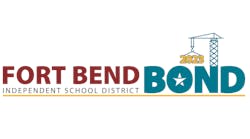When a bond referendum comes around for a school district, it often is the culmination of years of planning, strategizing and communicating to the public.
Especially in these economic times, passing a building referendum is challenging. Complete transparency among the superintendent, school board and community is essential to communicate the message of need thoroughly.
Define the need
"Need" could be based on many factors — enrollment growth, required building maintenance, or facilities improvements to support educational delivery. Whatever the cause, bond supporters should get the community involved early in the process and keep the school board informed.
Developing a bond program should follow meaningful discussions about programs, facilities conditions, future directions and what is needed to support education properly. Before a school system knows what to ask for, it has to determine its needs. That begins with a thorough understanding of the issues and involves looking at programs, functions, facilities, operations, maintenance, energy efficiencies and other components.
School leaders should obtain the support of the school board before beginning a needs assessment. Typically, the superintendent or chief administrator initiates the effort, and once approval is given, the process begins.
The next step is hiring a consultant to guide the process. A consultant should have expertise in education facilities planning, group facilitation, architectural/engineering disciplines and cost estimating. A school system's financial adviser will be able to provide support in bonding and tax impact. Needs are determined by assessing how the facilities support educational programs.
Committees
For a planning assessment study, a school system should establish a communications and decisionmaking network, starting with an executive committee and a steering committee. The executive committee is the clearinghouse for decisions and direction of the process. The steering committee is the working group that explores and analyzes ideas that form the direction of a building program.
For a good cross-section of participants in the process, the steering committee should include parents, business leaders, senior citizens, government officials, school administrators, teachers, students and community leaders. Is there a unique community program that should be represented? Early in the process, identify citizens who can become strong proponents for the referendum.
The consultant facilitating the process will help the steering committee to create a plan. In varying degrees, the committee will address "how," "what" and "where" students will learn.
Planning Process
The planning process may take several months to a year, depending on the extent of need. Regardless of the time element, keeping the steering committee engaged and the school board informed is vital to the success of the plan.
Consensus-building is critical to the process; every person agrees to be respectful of one another's ideas and viewpoints, to listen and try to understand differing viewpoints. As the committee develops a recommendation to present to the executive committee and the board, it must maintain enthusiasm and participation.
The members of the steering committee should become the messengers and advocates in the community. Certain members of the steering committee will take on leadership roles in the election campaign, or will become valuable activists for the cause.
"Yes" Campaign
Once a school board calls for a bond referendum, efforts move into high gear. A well-organized grassroots approach fueled by energetic citizens is the dream for every campaign. The leaders or chairs of the "yes" campaign committee typically arrange meetings at local business establishments, starting with a kickoff meeting of interested community members. Campaign leaders present information, share creative strategies, issue assignments and specify a timeframe. Be aware that others in the community may create a "no" campaign; it's important that all groups are communicating factual information.
Because a public school district cannot advocate for approval of a referendum, its role is to encourage people to vote and to disseminate information to the public. It's a good idea for a district to provide information on its website: Explain the planning process, and provide project descriptions, costs, timelines, tax impacts and other financial information.
With a timeframe of about 10 weeks, a "yes" campaign should focus on phone-calling to communicate the message and gauge how people intend to vote in the referendum. Concentrate on the "yes" and "undecided" voters throughout the campaign. It is important to initially inform the "no" voter, but focus on votes in the "yes" column rather than trying to persuade someone who will not be swayed.
Strategies
Different campaigns have different strategies; it is best to not politicize the issue. Yard signs, buttons, news releases, advertisements, flyers and social media all have their place in a campaign, but bond supporters need to be cautious not to polarize the community. All too often, the passion to pass a referendum becomes personal and overwhelming to campaigners, and failure can be devastating and divisive. Therefore, it's a good idea to have a central media coordinator.
If the facility needs are real, they will not go away; even if an initial referendum is defeated, the proposal will come back to the voters, perhaps in a slightly different form. School systems should keep communicating with their communities about facility needs and objectives. These days, it may take a few times before a bond referendum wins approval. As the saying goes, "If at first you don't succeed, try, try again."
Voters may reject a referendum because the tax impact surpasses the community's threshold of pain. Perhaps a proposal calls for changes that are too abrupt, and people are unprepared or don't understand the concepts. When a referendum fails, survey the community to find out why; this way, the next proposal may be modified to address concerns and issues. Also, the steering committee in the next round should try to include representation from the "no" constituency, so prior issues can be addressed.
Be prepared
Providing communications to voters is critical for a successful referendum. A school district and a bond campaign committee need to anticipate questions from voters and be prepared with answers. Frequently, bond supporters create scripts that answer anticipated questions accurately.
It is essential for community members to take lead roles in communicating information about the referendum. All school board members need to support the referendum publicly, be leaders in delivering the message, and have a presence in front of their constituents. A district superintendent needs to be engaged in informing the community of the facts, relaying the benefits as well as the consequences of the vote.
Erickson, AIA/NCARB/REFP, is president of ATS&R Planners/Architects/Engineers, Minneapolis, a multi-disciplined firm specializing in pre-K to 12 and post-secondary school planning and design. He can be reached at [email protected].
Related Video
This video about Hominy (Okla.) Public Schools and its April 2011 bond election is an example of promoting a bond election in a clear, concise manner.
Sidebar: Advice ... Directly From the Source
Roger M. Giroux, former superintendent of schools for Anoka-Hennepin (Minn.) district, offers these comments on passing a bond referendum:<
-
"I've won and lost them, and the difference is planning and communications well before the issue comes to a vote. Total meaningful involvement of the community early in the discussion is essential, coupled with a solid data-based study of needs, solutions and costs."
-
"Assuming that the base work has been performed correctly, you should have established a number of citizen/parent contacts who know the issues well and can serve as listening posts and spokespeople."
-
"Generally, a school district cannot 'campaign' for an issue with public tax dollars. The role of the district is to correctly define the issue, and describe benefits of a 'yes' vote and consequences of a 'no' vote. Explanations should be in the context of the effects on students."
-
"I remembered being at church after losing a bond vote; people were asking how I was dealing with the loss. I shared that we are still going to have to solve the problem; 'It isn't going away.' Some people said to me afterward that they hadn't done enough. Next time out, the issue passed; sometimes a loss helps. It's the chatter behind the scenes that really matters, where those in support will redirect negative chatter and straighten out the conversation. It is critical that supporters move positive chatter along and tell everyone they know that there is a need to pass the question."
-
"During public meetings, questions asked and answers given should be documented for a track record. Publish the information regardless of whether it is positive or negative, so people see your transparency. Beware of rumors, and correct them publicly so there is a continuous dialogue with your citizens."
-
"Prepare, prepare, prepare! Have the data that answer questions such as how much space is needed, what are the costs and what is the tax impact. These are set answers that shouldn't change. As soon as you see a number changing, credibility is damaged. Get the data right the first time, and don't guess!"


